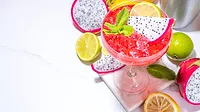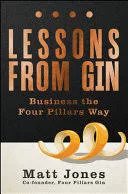From Exotic to Familiar
From Exotic to Familiar
By Martin Schultz and Elizabeth Fuhrman
Mainstream beverages are emerging from ethnic origins
The ethnic beverage market has its unique characteristics. Strongly
influenced by traditions that originated in the “old country,” ethnic beverage manufacturers nevertheless
constantly push to open new avenues of development, producing new flavors,
ingredients and methods of marketing.
The total ethnic food and beverage market, including
Hispanic, Asian and African American, currently generates about $75 billion
in annual sales, which is equal to $1 out of every $7 spent on beverages
and food products, according to 2006 consumer research from consulting and
market research firm The Hartman Group, Bellevue, Wash.
Ethnic drinks, it seems, are fermenting, bubbling and
brewing their way onto the U.S. beverage market. The surge in ethnic
beverage sales, along with the heavy investment beverage producers are
pouring into marketing new soft drinks and beers would seem to bear out
this premise. Yet talk to beverage marketing consultants about ethnic
infusions, and you’ll find the thinking about ethnic classifications
is changing. Today, the analysis is less about the demarcation between the
mainstream beverage industry and the ethnic minority market and more about
the shifts in demographic tastes.
“It’s not about an ethnic market in
beverages; it’s more to do with the broadening of consumer
demands,” explains Joe Heron, the South African-born president and
chief executive officer of Minneapolis, Minn.-based Ardea Beverage Co.
“If you want to talk about beverage trends affecting minority users,
you have to look at two drivers: a growing predisposition toward more
exotic fruit-flavored profiles and rising consumer demand to provide health
and wellness solutions, such as for obesity.”
Function and flavor options
Certainly, some consumer requirements are universal.
Whether mainstream or minority, consumers want beverages that make them
feel healthier and more energized. They also demand flavors that suggest
freshness, that make the consumer feel excitement. Take functional drinks,
for example. “Functional drinks are the biggest trend right
now,” Heron suggests. “It’s the best way to add value to
a beverage.”
Ardea, which is part of the PepsiAmericas umbrella of
companies, has produced what the company claims is the first soda based on
a health platform with marketing to Hispanic consumers. Originally
developed as an energy drink to help frequent fliers overcome jet lag,
Airforce Nutrisoda now has a Hispanic Web site delivering health and
wellness tips, nutritional information and diabetes resource information to
Spanish speakers.
When functional beverages are combined with fresh or
exotic flavors, such as citrus or the new generation of so-called
“superfruits,” including acaí or pomegranate, sales tend
to rise across all ethnic lines. Indeed, with the dramatic increase of the
total U.S. ethnic population, beverage manufacturers constantly are trying
to infuse popular tropical and exotic flavors into their beverage products.
Flavor always has been a strong motivating factor
underlying ethnic beverage trends. In fact, the range of ethnic flavors is
expected to expand this year, along with an increased consumer demand for
more pronounced tastes, according to a new flavors report produced by
Packaged Facts, a consumer goods market research company based in New York
City. “Consumers today are better educated about their beverage needs
and want flavors that satisfy their palates as well as their need for
health, convenience and sense of adventure,” says Tatjana Meerman,
managing editor of Packaged Facts.
Ethnicity greatly impacts preferences for beverage
flavors. “We’re seeing a lot of influences from the Hispanic
population on beverage flavors,” says Jon Wellwood, corporate sales
manager for Commerce, Calif.-based Gold Coast Ingredients. Wellwood
explains that the fruit flavors often found in nectars, such as pineapple
and apricot, are popular for juice drinks, while spice, cinnamon and
caramel flavors work well for neutral blended beverages.
A good example is horchata, a Latin American
rice-based drink flavored with cinnamon, he says. “However, just as
it took a while for smoothies to become an RTD phenomenon, horchatas have
not yet made it into the mainstream market,” he says.
On the other hand, mainstream blended beverages that
have made the leap from their ethnic origins include a whole range of fruit
blends. “Tropical and citrus blends are very popular as flavor
combinations in blended beverages,” Wellwood says.
Hispanic impact
The ethnic beverage category producing the most new
growth, the most innovation in flavor and functional attributes, and the
most new marketing and advertising investment is the Hispanic market. This
is not surprising considering in 2006 the U.S. Hispanic population reached
more than 44 million, accounting for more than 14 percent of the total
population. The main attraction for beverage marketers to target this
population lies in the group’s growth potential, states a November
2006 report by Chicago-based Mintel Group. By 2011, one in six persons is
projected to be Hispanic, according to the report.
In addition to possessing the fastest growth among all
population groups, the age distribution among the Hispanic population looks
good for the beverage market, Mintel says. In 2006, young Hispanic adults
aged 18 to 34 accounted for 29.8 percent of the total Hispanic population,
compared to 22.2 percent for that of the population as a whole. Beverage
consumption skews heavily toward young adults
aged 18 to 34, particularly in high-growth segments such as sports drinks
and energy drinks, Mintel explains.
In general, Hispanics of Mexican heritage are the
biggest consumers of sports and energy drinks among Hispanics, Mintel says.
Meanwhile, Hispanics of Puerto Rican heritage follow similar trends to the
U.S. population, and those of Cuban heritage are the largest consumers of wine among Hispanics. The geographical presence of
these different nationalities in the United States call for local marketing
strategies rather than national ones, Mintel states.
“The Hispanic beverage market is not only the
biggest minority market in the United States, but it is also the most
diverse,” explains Juan G. Tornoe, a Hispanic marketing consultant at
Hispanic Trending, Austin, Texas.
“U.S. food processors often make the mistake of
assuming it is a monolithic population. The reality is that while 66
percent of the Hispanic population is Mexican, 9 percent is Central
American, 8 percent is Puerto Rican and 5 percent is from South America.
Each of these groups has its own taste preferences in beverages.”
Nevertheless, Tornoe explains that among Hispanics in
general, some common themes resonate in their beverage preferences.
“One of the most important trends in the general
Hispanic market is the growing ‘retro’ culture. We see more and
more Hispanics born in the United States and now in their mid-30s who want
to go back to the authentic taste of their homeland,” Tornoe
observes.
Such nostalgia is translated in beverage terms into a
yearning for such flavors as coconut, tamarind and sugar cane. Growing
numbers of Mexicans buy their Coca-Cola in U.S.-Mexico border towns because
of the taste difference, Tornoe says. “Mexican Coca-Cola has a
different kind of sweet taste because its sweetening comes from sugar cane,
not the more regular corn syrup used north of the border,” he
explains.
For U.S. beverage producers to energize the Hispanic
consumer, they have to make the right emotional connection, Tornoe
explains. To reinforce this concept, he points to the growing trend in
supermarkets in localities with large Hispanic populations to sell
beverages imported from specific South American countries. “For
example, you can find a beverage called ‘Chi Cha
Limeña,’ a Peruvian beverage flavored with a unique type of
corn that is now being produced for Hispanic populations in the New England
area,” he says.
Hispanic beverage preferences
The Hispanic population’s beverage preferences
offer growth potential for particular beverage categories as well. For
example, Hispanic consumers are benefiting juice sales, with Hispanics more
likely than non-Hispanics to drink orange juice and other fruit juices,
such as mango, pineapple, guava and kiwi. While decreasing sales have
stricken juice manufacturers during the past several years, unfrozen
nectars saw the smallest volume decline of the juices in 2006 (falling 1
percent, on value gains of 2 percent), partially due to Hispanic consumers,
says a fruit and vegetable juice report from Euromonitor International,
Chicago.
Nectars such as Kerns, Jugos del Valle and Jumex have
a strong following among Hispanic consumers, and often feature more
tropical flavors such as guava and papaya. Traditionally found in
Hispanic-oriented supermarkets in the United States, these Hispanic brands
have begun to expand their distribution into more mainstream outlets,
further boosting unfrozen nectar sales, Euromonitor says.
Hispanic households are more likely than non-Hispanic
households to consume whole milk, Mintel states. This is in contrast to the
general trend toward no-fat/low-fat milk. They also are slightly more
likely to consume lactose-free milk, which could be due to the fact that
around 50 percent of the Hispanic population have a tendency to be lactose
intolerant, according to Lactaid, a producer of lactose-free milk.
In addition, instant coffee and international flavored
coffee are more likely to be consumed by Hispanics than non-Hispanics,
Mintel says. Hispanics are less likely than non-Hispanics to consume tea,
probably due to the strong cultural ties to coffee. According to the
report, marketers could drive category growth by launching tea flavors
aimed at Hispanics, such hibiscus, ardisia and maté, which are
flavors indigenous to Mexico.
Regular cola and non-cola soft drink consumption is
higher among Hispanics than non-Hispanics. Immigrants are less likely than
native-born Hispanics to consume regular non-cola because they initially
tend to stick with the brands and line extensions available in their own
countries, Mintel says.
Other non-alcohol beverages, including bottled water,
ready-to-drink iced tea, sports and energy drinks, and seltzer water,
present the largest growth potential for beverage companies because
Hispanics are significantly more likely than the general population to
consume beverages from these categories, Mintel says. Sports and energy
drinks offer the most prominent consumption difference between
non-Hispanics and Hispanics, as immigrants are more inclined than
native-born Hispanics to drink them.
As far as alcohol consumption stands, Hispanics are
more likely to consume imported beer than domestic beer. Although Hispanics
derive a sense of pride in choosing beverages from their country of origin,
Mintel believes domestic beer manufacturers have not fully tapped this
market. Hispanics are significantly less likely than non-Hispanics to
consume wine in general, Mintel states, and, in turn, very few vintners
target the Hispanic population through bilingual communication. Tequila
remains the most consumed distilled spirit by Hispanics, but native-born
Hispanics are more likely than immigrants to consume distilled spirits
favored by the population in general.
Although Hispanics, particularly recent immigrants,
tend to purchase similar brands and flavors to those consumed in their home
countries, all beverage companies can increase product awareness among
Hispanic consumers. Free sampling and bilingual advertising offer two
targeted marketing efforts Hispanic immigrants prefer, Mintel states.
Hispanics are more likely than non-Hispanics to sample a beverage at a
supermarket, and also significantly more likely than non-Hispanics to
purchase it, the report states.
Reaching the consumer
Latino buying power is forecast to reach around $1
trillion by 2010. According to estimates by Hispanic Telligence, the
Hispanic purchasing power between 1994 and 2004 experienced a compound
annual growth rate of 7.7 percent — nearly three times the 2.8
percent total U.S. rate of disposable income.
Recognizing the huge purchasing power of the Hispanic
community, American beverage producers have been introducing their own
products in the marketplace and backing them with aggressive marketing
campaigns.
One example is Miller Brewing Co., which recently
released Miller Chill, a beer intended to compete with Corona. Backed with
a massive marketing campaign that includes a Hispanic-oriented Web site,
Chill challenges Corona’s unique emphasis on being served with lime
and salt by directly including these ingredients at the brewing stage.
Miller is not stopping there. The company recently
came out with its Cinco de Mayo beer, intended to coincide with the holiday
in May celebrated by Mexicans. Miller Lite also has launched a new Hispanic
Web site to kick off its Gold Cup program. “This new site and its
interactive content links directly to the theme for many of Miller
Lite’s Gold Cup program initiatives,” says Dave Dixon,
Miller’s senior director of Hispanic marketing. “It will bring
together [soccer] fans from throughout North and Central
America.”
Responding aggressively to Hispanic demands, The Coca
Cola Co. has unleashed the power of the Mexican luchador (wrestler) and movie
legend, the Blue Demon. The latest version of Coca Cola’s Full
Throttle energy drink, the Blue Demon is aimed at the male segment, aged
between 20 and 30 years old.
And in a sort of mega counter response, Grupo LALA,
Mexico’s largest dairy producer is moving to become the U.S. Hispanic
consumer’s preferred brand as well. Targeting Hispanic markets such
as Houston, Los Angeles and Chicago, LALA Foods is aiming to become the
leading provider of Mexican blended and drinkable yogurt and other beverages.
Hispanic advertising dollars
Hispanic advertising continues to outperform the
sluggish mainstream U.S. advertising industry this year, reports Advertising Age’s 2007 Hispanic Fact Pack. TNS Media Intelligence forecast Spanish-language media
spending to grow 3.7 percent for 2007, which is double TNS’s 1.7
percent growth prediction for the overall U.S. measured media spending.
In the Top 10 categories for ad spending in Hispanic
media, food, beverages and candy ranked No. 5 at more than $326 million in
2006, according to TNS. The majority of food, beverage and candy spending
falls into television advertising vs. print media. Beer, wine and spirits
ranked No. 10 on the list, with $140 million in ad spending in Hispanic
advertising, and the majority of its spending in television dollars as
well. Automotive, retail, and telecommunications, Internet services and
ISP, respectively, ranked as the top three in ad spending in Hispanic
advertising.
For beverage companies’ spending performance,
PepsiCo, Coca-Cola Co., SABMiller and Anheuser-Busch Cos. all ranked in the
Top 50 Advertisers in Hispanic Media by measured U.S. media spending,
calculated by TNS. Coming in at No. 17, PepsiCo led the soft drink giants
and spent nearly $58 million in 2006, which was a 15.9 percent decrease
from the year before. Following next at No. 18, Coca-Cola Co. spent more
than $51 million last year, which was a 70 percent increase from 2006.
For the domestic brewers, SAB Miller reached nearly
$46 million in Hispanic media spending in 2006, which was a 12 percent
increase from the previous year, and ranked the company 24th. Coming in at
No. 27, Anheuser-Busch grew to more than $41 million in Hispanic ad
spending, which was a slightly more than double its spending for the
previous year.
Looking for a reprint of this article?
From high-res PDFs to custom plaques, order your copy today!







